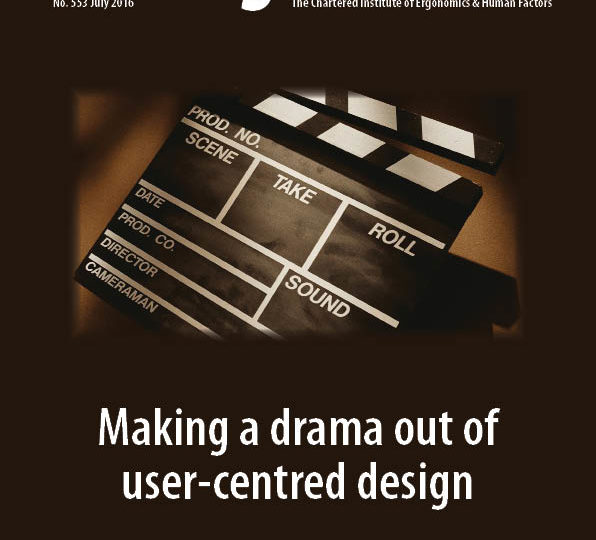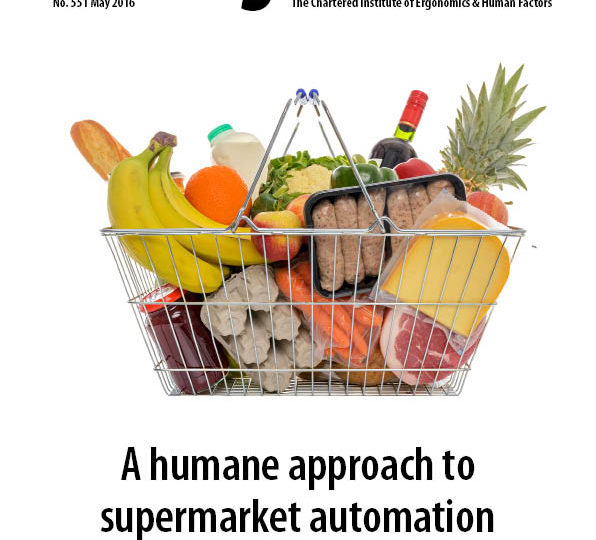
Alzminder is an app designed to provide easy to use support for people with dementia. The developers drew on user centred design principles to design it.
Alzminder was developed by Christos Xenakidis around 2012, when he was pursuing a graduate programme on Information Systems at the Open University of Cyprus (OUC). At the time, Christos was a volunteer in the Greek Association of Alzheimer’s Disease and Related Disorders and participated in activities of the association for the support of people with dementia. His experience with the needs of people with dementia, combined with his new knowledge on information systems design and development, led Christos to propose a related subject for his graduate project: the use of recent advancements in smartphone technology to support people with dementia.
Dr Antonis Hadjiantonis was teaching at OUC and he gladly agreed to supervise Christos’ project. So, together they engaged in a process of discussing the idea, observing and surveying the needs of the potential end-users, refining the scope of the project and finally designing and developing an app prototype. The idea was simple: people with dementia need support to maintain a good quality of life. Technology already offers some solutions to the particular challenges faced by people with dementia. Some solutions are already available in the market, including memory support devices such as the NeuroPage system and the Kind Reminder® system. Other devices for cognitive improvement and entertainment include the Talking Photο Album, and devices for communication and support of social interaction include the Talkables Visual Message Communicators. A person would need at least 600 Euro to buy all these technologies and devices and address various needs, not to mention the practical limitations of managing them all. So, how about combining functionalities of these tools into one single app environment accessible via cheap smartphone devices that we already use?
Moving forward
That’s how the prototype of Alzminder was designed, integrating in an Android app environment a number of services: Reminders, Music Therapy and Entertainment, Photo Album, Cognitive Improvement Exercises (Games), Contacts and Calls and an Emergency Button.
The end of the Master’s thesis, in 2012, found Christos and Antonis thinking of ways to exploit the prototype solution and turn it into a real product that would have an impact on society and particularly people with dementia. The chances increased when George Milis, director of EuroCy Innovations Ltd was approached and gladly joined the team. EuroCy is a small ICT Company in Cyprus, active in technology adoption for addressing social challenges, with expertise in ICT and supportive technologies for people with disabilities.
The extended team had immediately entered into discussions on refining the Alzminder idea to better address the real needs of potential end users. The app would need to be built as a high quality product, using state-of-art technologies and development tools, easy to use, with accessibility in mind. A solution would be required for the remote configuration of the services’ content too as the user of the app would not always be able to create the content themselves, and a caregiver would not always be near to support the task. This led to the idea of the Alzminder Supportive Web Platform through which caregivers create content for the Alzminder app in a private secure web space and automatically push it to the remotely connected device.
The EVGIRASKO project
The team had now a much clearer idea of how the end product should function. Undoubtedly, there was much to be done before Alzminder could enter the market, from software designs, to developments, to dissemination, to marketing. Funding was a problem, but the timing was good since a couple of months later, the Cypriot Ministry of Energy Trade Industry and Tourism announced a Business Innovation Plan to fund the commercialisation of innovative prototypes by 60%, in the framework of EU Structural Funds. The team seized the opportunity and in March 2013 EuroCy Innovations Ltd, following successful evaluation of the submitted proposal, kicked-off the EVGIRASKO project, with a concise work plan that ended with the availability of the Alzminder product in the market by the end of March 2015.
Challenges during the development process
Adapting to user needs: The difficulties encountered in the effort to develop assistive tools and applications for people with dementia, vary in number and type. Dementia may be a consequence of different causes, which means that the problems experienced may differ. Moreover, as the syndrome has different levels of intensity, one person may sometimes forget small details like where their glasses are located, while another may be unable to remember the names of friends and family. The fact that people with dementia may have intense and rapid mood swings makes the work of assistive application engineers even more difficult. Furthermore, the effects of the disease on memory and perception may create obstacles to learning how to use new software applications.
To minimise the risk of failure for the product, valuable feedback has been collected during the design and development phases, from dementia professionals including psychologists, neurologists and people with Mild Cognitive Impairment at the Greek Association of Alzheimer Disease and Related Disorders (GAADRD). The people with mild cognitive impairments were able to complete simple tasks, like answering quiz questions by observing a picture and by pressing the button with the right answer, making phone calls by selecting contacts through their pictures, etc. The exact functionality selection and the design decisions have been made after thorough literature review and observation of these people in screening and therapy sessions at GAADRD.
Selection of technologies: During the initial stages of Alzminder design, the team faced the challenge of selecting the appropriate technologies. The App Inventor platform had been initially adopted for the development of the mobile app prototype. However, before the mid stages of development, it was obvious that the flexibility offered by App Inventor was not enough for Alzminder needs and so a quick decision had been made to continue with the Android SDK on Eclipse, which allowed full control over the developed software. At the time of initiation of Alzminder product design and development, Android 2.3 was the most widely adopted version in the market. Very quickly, however, new and more advanced and capable versions of Android penetrated the market, making it of utmost importance for the Alzminder team to review the current developments and make proper adjustments for the solution to run on new Android versions as well. And, as if that was not enough, new smart watch devices started appearing and gaining momentum. It was clear that such devices could have been a natural host for the Alzminder app, so the app had to be adjusted and tested to operate smoothly on those devices as well.
Integration of components: As soon as the mobile app functionality arrived at a mature stage, the integration with the web platform was initiated. The first approach adopted by the team was to perform modifications on the Drupal web platform to allow immediate communication with the mobile device and configure the application. However, after carefully studying the solution, it appeared that hard-coding the integration would create issues with scalability and portability in the future. Therefore, a dedicated JSON-based API was developed, which offers a loose coupling between the platform and the mobile app, allowing the convenient change of any of the two in future stages without having to re-design the whole system.
Commercialisation: By the end of the development, the team were happy with the result. It was time to visit European trade shows and potential customers to demonstrate the solution and receive feedback before going live. A task that was initially thought by the team as easy appeared to be the most challenging one: what would be the pricing strategy? how to set up the selling and support infrastructure? These questions let to numerous discussions and revisions of internal agreements. The team also purchased the services of an expert economist and business consultant who guided the efforts of refining the business plan and the commercialisation strategy of the product, including a viable financial plan. How many potential customers are there? What percentage would want to buy Alzminder? Why? How much would they pay for the value it offers? How much do we need to continue investing for the support and further development of the product? How do we set up the helpdesk technical support?
The two years of EVGIRASKO were very productive and interesting. As expected, the development process was highly time-consuming and iterative, since the parallel contacts with potential end users from Cyprus and Greece kept refining the requirements of the app. Then it was also the decision of which technology to adopt for the web platform, which on the one hand had to be secure and based on established standards and on the other hand allow affordable cost. By mid-2014 the first version of the Alzminder system was ready and opened the door to demonstrations in local and EU markets through relevant events and information days.
The key features of the resulting application are:
Daily Routine Support: Caregiver can record audio reminders to keep end users informed and active, e.g. create activity prompts to use the application features: To Make a Call, To Hear Music, To Play a Game, To View a Photo Album with narration or to perform a physical activity.
Music Therapy & Entertainment: Custom music starts and stops with the click of a button when prompted.
Remember Happy Moments – Education & Training: User can browse photos and hear a narration for each photo. This can be for educational purposes or to help people remember happy moments of the past.
Cognitive Improvement Exercises: Caregiver is able to create personalised quiz games in the field of user’s interests.
Social Inclusion: The user can browse a contact list with pictures and make calls simply with a click on the picture or the call button under it.
Feeling Safe: Automatically sends custom SMS messages to preconfigured contacts.
Caregiver Settings: Caregiver can login in a password-protected settings area and adjust almost everything that will appear at the user’s screen (contacts, music and photo albums, etc).
With a smart device attached to the assisted person’s body, combined with the support of installed sensors and appropriate software, the Alzminder solution simplifies the interaction with the user. Another important advantage compared to hardware solutions is that software on a smartphone can be updated and adjusted, manually by the caregiver and/or automatically by the system itself based on history of user actions, with artificial and computational intelligence techniques.
With Smartphones becoming more popular with the older generation and the Android operating system being an open platform for developers to build or extent these assistive applications by adding new features collectively, the way is paved for further advances.
By George Milis, Antonis Hadjiantonis & Christos Xenakidis
Christos Xenakidis is a software engineer and assisted living technologies consultant at EuroCy Innovations. Antonis M. Hadjiantonis is a senior engineer at CyRIC focused on ICT research and innovation projects. George M. Milis is the Director of EuroCy Innovations and has extensive experience as Senior ICT analyst and consultant.




